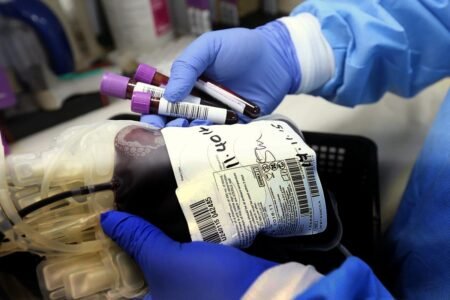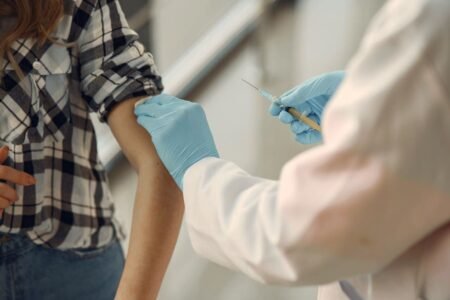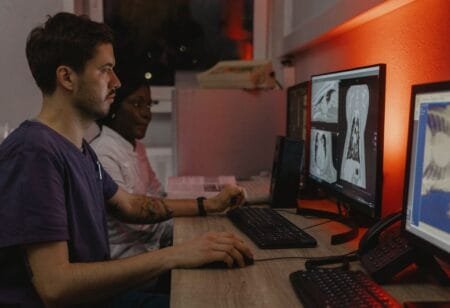The European Commission has, on Rare Disease Day 2013, announced EUR 144 million of new funding for 26 research projects on rare diseases. The projects will help improve the lives of some of the 30 million Europeans suffering from a rare disease. The selected projects bring together over 300 participants from 29 countries in Europe and beyond, including teams from leading academic institutions, SMEs and patients’ groups. The goal is to pool resources and work beyond borders, to get a better understanding of rare diseases and find adequate treatments.
Advertisement
1) Why is research at European level important?
There is a huge need for European cooperation in rare diseases research. Individual Member States are not able to gather enough knowledge and expertise in a specific disease due to scarce resources and the relatively low number of patients in each Member State. As a consequence, it is also difficult for doctors to diagnose and identify the best treatment for rare diseases. Only through exchange of knowledge and pooling resources together, Europe can get closer to solutions.
Research on rare diseases presents also remarkable interest for other health sectors: rare diseases can serve as models to better understand more common diseases. And overcoming the many hurdles to investigating rare diseases can help improve health research in other areas e.g. by developing models for personalised medicine approaches.
2) Why has the EU led the creation of the International Rare Diseases Research Consortium (IRDiRC)?
Rare diseases are a challenge too big for any country or world region to master alone. This is why the European Commission, together with national and international partners, initiated IRDiRC. The ability to share resources and expertise with other organisations from around the world will multiply our chances of finding new ways to diagnose and fight rare diseases.
IRDiRC’s key objective is to deliver, by 2020, 200 new therapies for rare diseases and the means to diagnose most of them. The European Commission and the U.S. National Institutes of Health launched this initiative in spring 2011. It brings together organisations ready to invest, over a 5-year period, more than 7.6 million into research which contributes to its objectives.
The European Union will invest close to 500 million into research relevant to this area during the period 2007-2013.
Just under 30 organisations from Europe, North America and Australia are already part of IRDiRC and more organisations from across the globe are expected to join the initiative. The consortium will also rely on the collaboration with researchers, patients groups, industry associations and regulatory bodies.
3) Apart from research, what else is the EU doing to combat rare diseases?
The European Commission helps bring together the scarce knowledge and resources that are currently fragmented across individual EU countries, to maximize synergies and results.
The 2008 Commission Communication on rare diseases – ‘Europe’s challenges’, put forward a co-operation system between the Commission, Member States and various stakeholders. This paved the way for a Council Recommendation in 2009 on action in the field of rare diseases, a number of Joint Actions under the EU Health Programme, e.g. the ‘Orphanet Europe’ joint action which helps patients and professionals to collect and share expertise and information across borders, and the creation in 2010 of the EU Committee of Experts on Rare Diseases.
Specific measures of the EU policy on rare diseases include improving recognition and visibility of rare diseases, ensuring that they are adequately coded and traceable in all health information systems, supporting rare diseases registries and providing a European Platform for rare diseases registration, strengthening EU-level cooperation and coordination and supporting national plans for rare diseases.
In the Council Recommendation, Member States are called to adopt national plans or strategies for rare diseases by the end of 2013. The Commission has supported the development of technical assistance and training tools to help Member States create these national plans, i.e. the EUROPLAN project and the 2012 Joint Action. It is up to Member States to shape their own national rare diseases plans adapted to their reality, but following common guidelines.
4) What is the kind of research that the European Research Council is funding to fight rare diseases?
Molecular and Genetic Study of the human infections by Capnocytophaga canimorsus “CAPCAN” Funding: EUR 1.47 million
Capnocytophaga canimorsus are Gram-negative bacteria from the normal oral flora of dogs, which can cause rare but severe infections in humans who have been bitten or licked, resulting in fulminant septicaemia with peripheral gangrene. With his ERC grant, Prof Guy R. Cornelis sets out to study the complex interactions between the bacteria and human cells, and to determine whether all bacterial strains are equally dangerous in this rare human infectious disease. By developing virulence models, the project should offer new insights into this recently discovered pathogen and information on how to prevent infection in the future.
Genome Stability Mechanisms in Aging “GENSTAGE” Funding EUR 1.44 million
This research project aims at understanding the mechanisms underlying aging. It focuses on the discovery of novel genes functioning in genome stability and longevity regulation that might be instrumental for development of preventive therapeutic strategies to treat rare genetic progeroid disorders (i.e.; rare disorders that appear early in childhood and impact children’s health with for instance, growth retardation and neurodegenerative problems such as deafness, vision deficits and motor difficulties).
Molecular by-pass therapy for mitochondrial dysfunction – “Mito-by-pass” Funding EUR 2.43 million
The project deals with malfunction of the mitochondria, the cell’s “power-plants”, which underlies a diverse range of human pathologies; including rare neuromuscular syndromes, many cases of common multifactorial diseases, neurodegenerative conditions such as Parkinson’s disease, and devastating metabolic disorders of infancy. The research team of Jacob Howard Trevor develops an innovative strategy for genetic therapy of this vast range of pathologies.
Overview of the 26 new research projects, in alphabetical order, with all the participants
Source: European Commission






